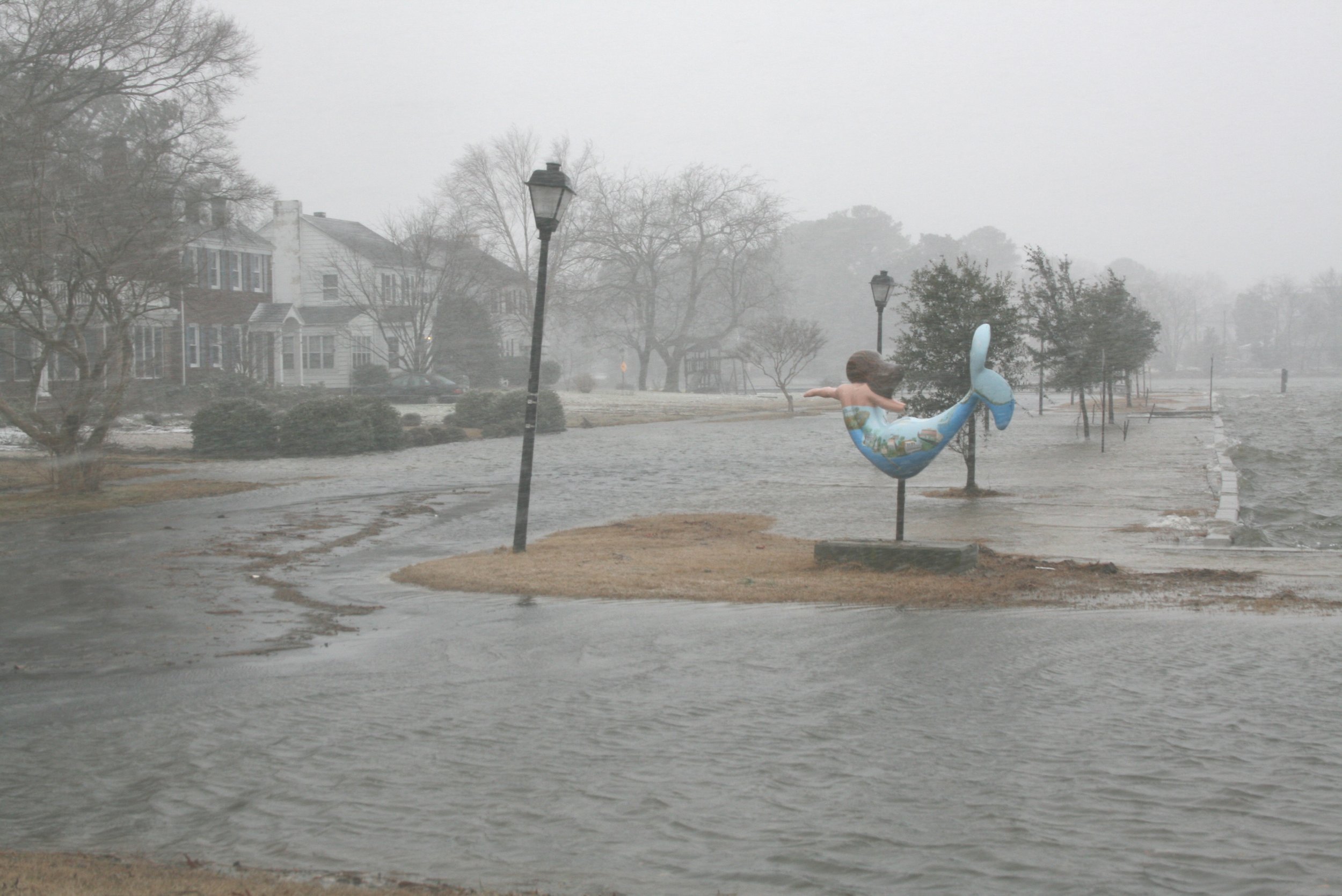
Understanding Flood Insurance
The National Flood Insurance Program
The National Flood Insurance Program (NFIP) is a federal initiative that helps property owners in flood-prone areas protect themselves from financial losses due to flooding. The NFIP reduces risk by
Mapping flood risks in localities,
Requiring local governments to adopt land use and building standards that minimize flooding, and
Offering flood insurance to property owners.
In Virginia, rising sea levels and intense storms pose significant threats. The NFIP helps Virginians understand where flooding could occur, how to reduce flood damage to structures, and how to insure their properties against flood losses.
Wetlands Watch began developing programs around the NFIP in 2012 after recognizing that the program influences both local government land use decisions and individual property purchases in high flood-risk areas. Since these areas often contain wetlands and natural resource buffers, the NFIP is a crucial policy program for our mission.
Note:
The NFIP recently changed how it prices flood insurance premiums. Insurance rates are no longer based on flood maps; instead, the new "Risk Rating 2.0" system bases rates on individual property characteristics, such as the number of floors and distance to a water body. For more on NFIP’s Risk Rating 2.0 System, consult the Risk Rating 2.0 Page.
NFIP Glossary of Terms & Explanations in Ordinary Language
We’ve translated FEMA’s explanations of key terms into ordinary language, and provided additional context to make them more accessible to members of the general public.
The official FEMA definitions of these terms are to be found on the National Flood Insurance Program Terminology Index webpage.
What Property Owners Should Know
If you live where it could rain or flood, you should buy flood insurance. Flood insurance will help protect your property and financial investment from flooding. In Virginia, climate change is causing increased rainfall and more frequent tidal flooding. The risk is getting worse and you should be protected against losses.
Obtain an Elevation Certificate
An Elevation Certificate provides critical data on your property’s elevation in relation to the Base Flood Elevation (BFE). If your property is above the BFE, you may qualify for lower rates. If you do not already have one, contact a surveyor to obtain an elevation certificate. This document ensures that you are charged premiums reflecting the true risk to your property.
Evaluate Small Fixes to Lower Your Risk
Flood Vents. Installing flood vents allows water to flow through the property’s foundation during a flood, minimizing structural damage.
Other Mitigation Efforts. Reinforcing certain aspects of your property, like installing water-resistant materials or improving drainage, may also reduce flood damage.
Consider Elevating Your Property
If your property is at risk of flooding and built low to the ground, elevating the structure could save thousands of dollars in flood damage. Though a costly upfront investment, elevating your home can also drastically reduce your flood risk and protect your belongings from future flood events.
FEMA Grants: Look into FEMA Hazard Mitigation Grants that may help cover costs for elevating your home or retrofitting structures to meet current floodplain regulations. Funding is competitive, so it’s essential to consult your community floodplain manager early to assess eligibility and timelines.
Note: In the coastal zone, where tidal flood risk is encroaching on your property, elevating is a band-aid solution to a much larger problem. Please consider the long term risk of not being accessible by emergency vehicles during a flood event.
Monitor Property Changes
Substantial Improvements: Any damage or improvements exceeding 50% of your structure’s market value will require your property to meet updated floodplain standards, including potential elevation.
Stay informed: Some localities calculate substantial improvements on a cumulative basis over time, so it’s important to stay informed about your community’s policies by speaking with your local floodplain manager.
Prepare for Gradual Rate Increases
Under Risk Rating 2.0, many properties will gradually see rate increases, as high as 18% or 25% per year, until they reach their full actuarial rates.
Community Support for Property Owners
The Community Rating System (CRS) benefits NFIP policyholders in Virginia by offering annual discounts on flood insurance premiums in communities that exceed the minimum floodplain management requirements set by FEMA. Local governments can participate in the CRS by implementing flood risk reduction activities such as public education, improved flood mapping, and the protection of open space. Communities earn points based on these activities, which correspond to different CRS classes that range from Class 10 (no discount) to Class 1 (up to 45% discount). For Virginia residents, especially in coastal and flood-prone areas, participating in the CRS can lead to substantial savings on flood insurance, while also promoting better flood preparedness and resilience at the community level. The CRS is the only program that monetizes the protection of wetlands and shoreline buffers, offering both a carrot and a stick to local government staff when reviewing permit applications to disturb in these areas.
For more information on the Virginia Community Rating System Workgroup, which we chair, check out the CRS page.
How to Access and Read a Flood Map
Map Updates and Accessing Digital Flood Maps
FEMA updates flood maps for all communities with varying regularity. These maps provide more accurate risk assessments based on updated data. You can view updated flood maps via FEMA’s National Flood Hazard Layer. This online map allows users to enter their address and view flood risks. Many local government websites offer Geographic Information Systems (GIS) with flood maps, but paper maps are also available at local government offices.
Map Tips
Properties in higher-risk zones, like A and V zones, may require flood insurance. Homeowners who disagree with their flood zone classification can work with FEMA and their local government to potentially revise it by submitting a Letter of Map Amendment or other formal documentation.